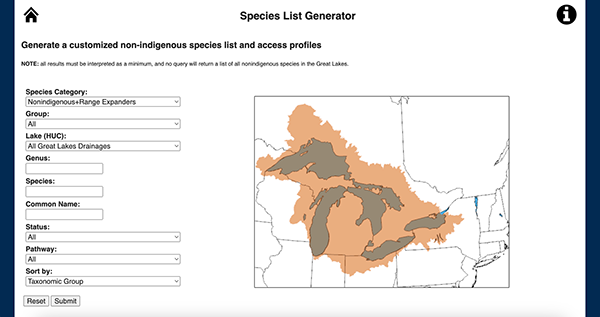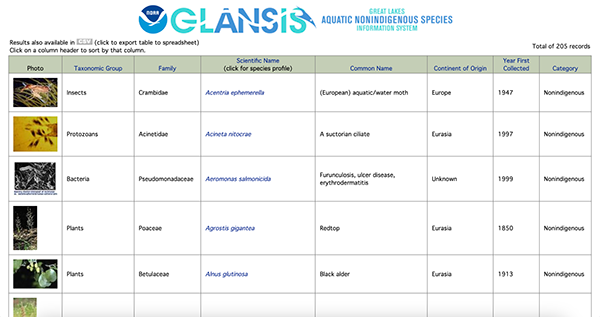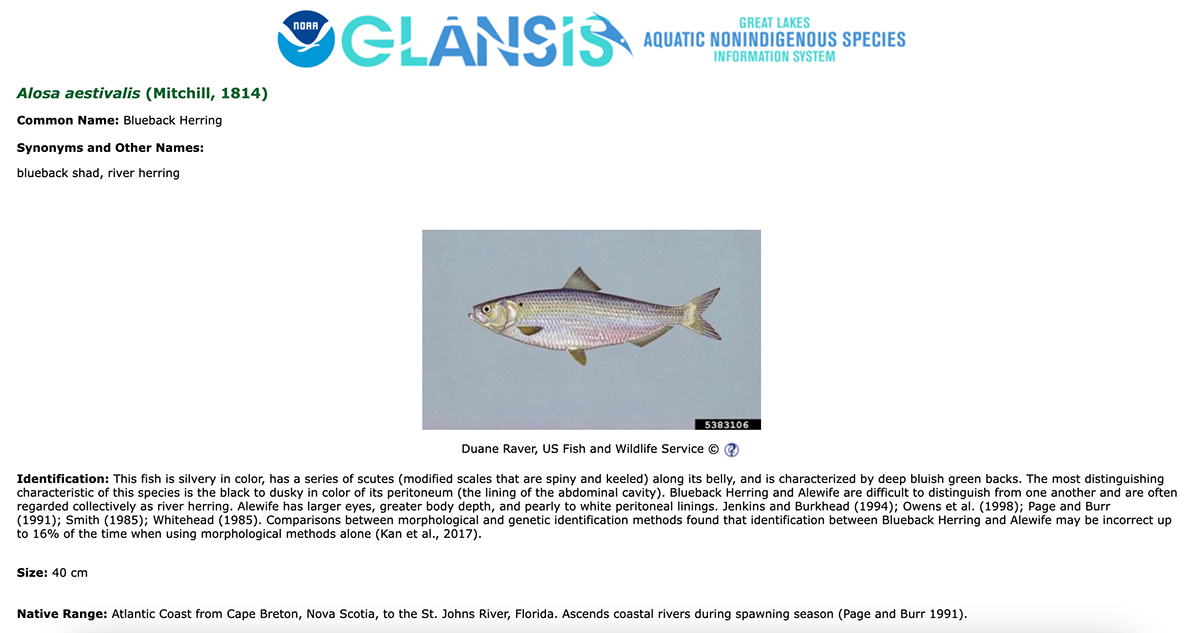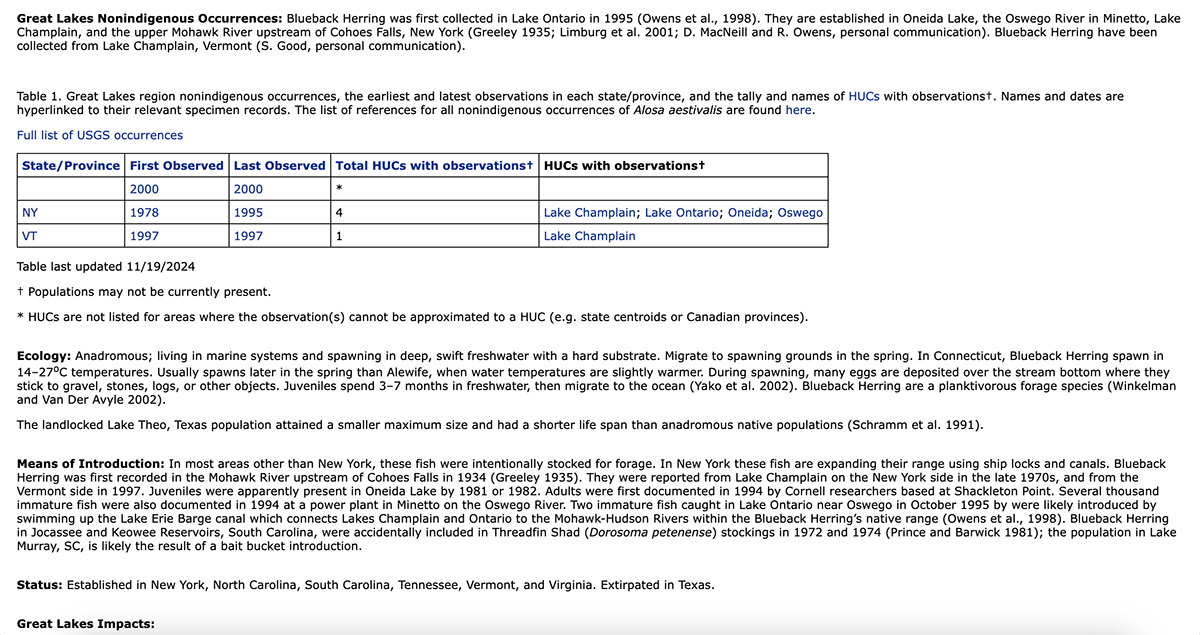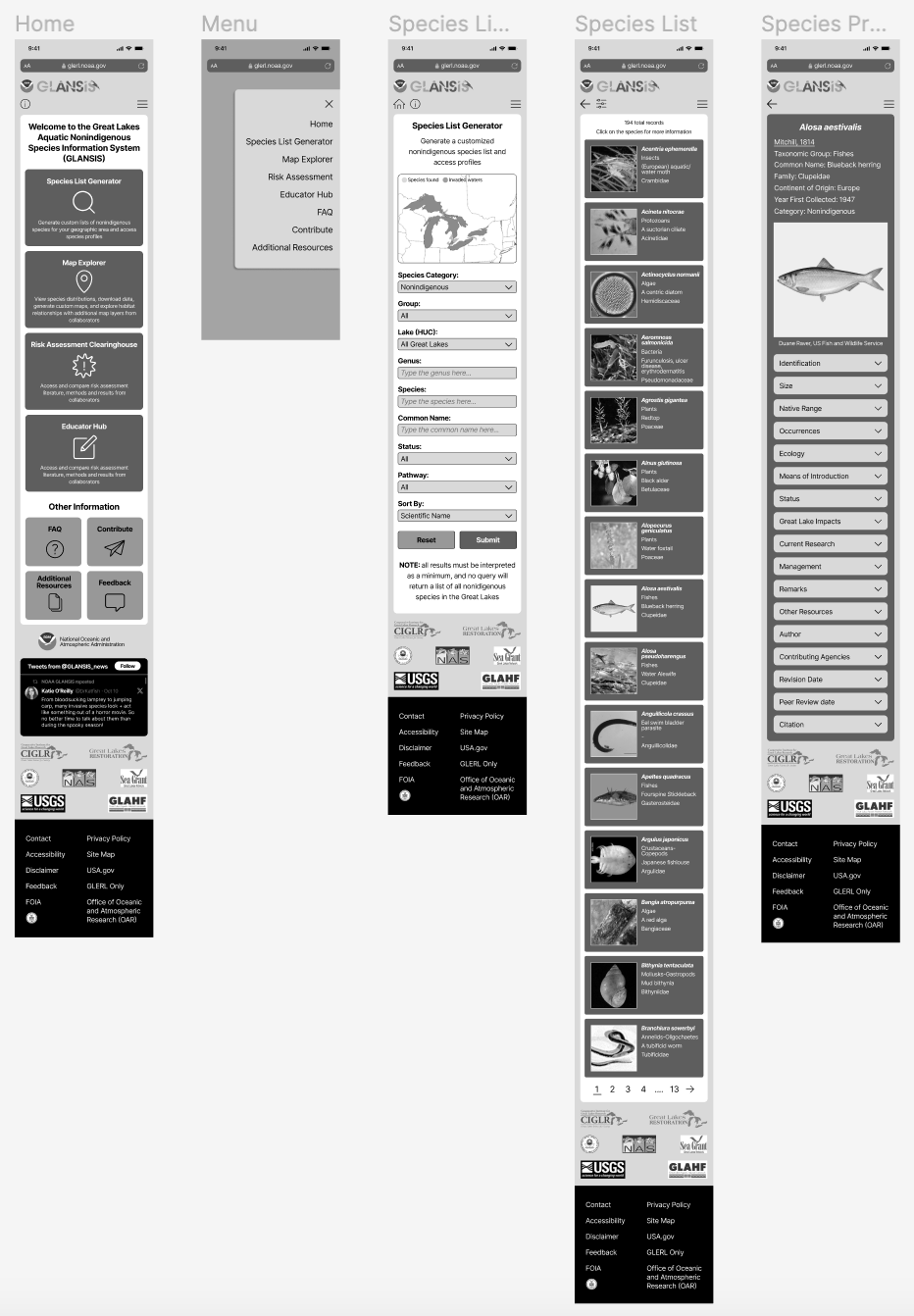NOAA
UX Design
Overview
The goal of this project was to redesign one of the main features of the Great Lakes Aquatic Nonindigenous Species Information System (GLANSIS) for the National Oceanic and Atmospheric Associations (NOAA). The full research and design process lasted approximately 12 weeks.
Problem Statement
With GLANSIS site users ranging from natural resource managers to fourth grade teachers, many are looking to gain insight into the 180 nonindigenous species documented in the Great Lakes. While the Species List Generator page is the primary resource used, it poses usability challenges due to the overwhelming content and poor organization of important information which hinders the research process. Changes must be made to effectively relay this crucial scientific and educational data.
Final Prototype - Mobile
Final Prototype - Desktop
Here are some images of the original website that we were tasked with redesigning:
During the initial two iterations, I focused primarily on refining the Species List Results and the Species Profile page. My aim was to enhance specific functionalities without significantly altering the overarching visual identity of the Home and Species List Generator pages.
After the initial design phase, I actively sought input from instructors and peers and incorporated their valuable feedback in my site by creating a more modern look and feel. Creating a sleek design is important because it ensures the GLANSIS site is intuitive and easy to navigate, allowing users to seamlessly follow the flow of information. It also aligns with the design standards they may encounter on other websites, such as Rivian, which I drew inspiration from. This helps the site become more familiar and user-friendly, encouraging engagement from diverse audiences like natural resource managers and teachers who rely on clear platforms to effectively access and share information.
The next stage of the project asked me to adapt my mobile interface to a desktop version. This involved making precise adjustments to the mobile frames, ultimately resulting in the creation of the initial iteration of the desktop interface.
Before submitting my final prototypes, I felt that the user interface on the desktop version presented challenges with limited visibility of on-screen items without the need for scrolling. I adjusted the dimensions of my search features, result displays, and the profile information. These changes enhanced the overall user experience, facilitating smoother navigation and heightened usability.
In the final stages of development, I fine-tuned specific visual elements to ensure consistency and aesthetic coherence across the site. One of the last few changes I made was changing the drop down colors on the Species Profile and including a main image on the Species List Generator main page to reflect the look of the Home page. These strategic enhancements not only refined the appearance but also contributed to a more cohesive and visually appealing interface.








